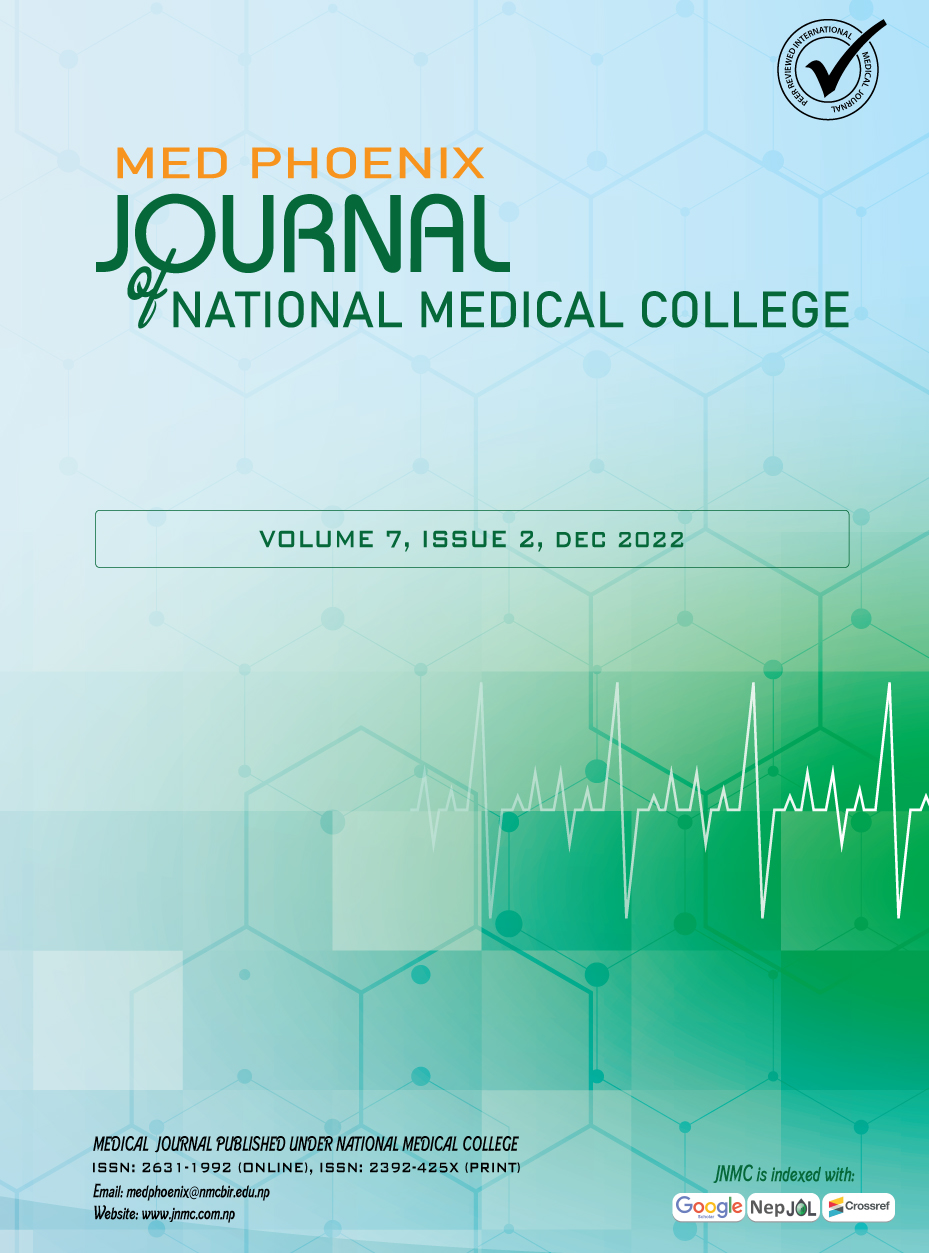Thyroid Peroxidase Autoantibody in Subclinical and Overt Hypothyroidism: A Hospital Based Retrospective Study
DOI:
https://doi.org/10.3126/medphoenix.v7i2.49408Keywords:
Autoantibody, Hypothyrodism, Thyroid hormones, Thyroid peroxidaseAbstract
Introduction:Thyroid peroxidase (TPO) is a key enzyme of thyroid hormone biosynthesis as it catalyzes the iodination and the coupling steps. Subclinical hypothyroidism is the condition of increased Thyroid Stimulating Hormone (TSH) and normal levels of serum free thyroxine (ft4) and free triiodothyronine (ft3) levels. Subclinical hypothyroidism can be progressed to overt hypothyroidism in which ft3 and ft4 levels are decreased along with an increment of TSH levels.
Materials and methods: This was the hospital-based retrospective study conducted on the patients who had undergone thyroid function test measurements along with thyroid peroxidase autoantibody level in serum. The study duration was eight months (January 2022 to August 2022). All the data were entered in Microsoft Excel version 10 and analyzed in SPSS version 22 accordingly.
Results: In the study among 424 patients, 73.8% were female and 26.2% were male. Firstly, our study revealed subclinical hypothyroidism was predominant (41.7%), followed by euthyroidism (34.7%) overt hypothyroidism (20.3%), and overt hyperthyroidism (3.3%). Secondly, there was no statistically significant difference in age (P value: 0.26) and gender (0.64) between subclinical and overt hypothyroidism. There was no statistically significant difference in serum anti-TPO antibodies level between subclinical (median 6.25) and overt hypothyroidism (median 6.12) (P value: 0.92) when median and interquartile ranges were compared. Correlation analysis revealed a significant positive correlation of TPO antibodies with TSH (0.27, 0.00) and no significant negative correlation with fT4 (-0.02, 0.46) and fT3 (-0.05, 0.37).
Conclusion: The current study revealed the elevation of thyroid peroxidase autoantibodies in both subclinical and overt hypothyroid patients though subclinical hypothyroidism was predominant.
Downloads
Downloads
Published
Versions
- 2023-01-06 (2)
- 2022-12-31 (1)
How to Cite
Issue
Section
License
Copyright (c) 2022 Med Phoenix

This work is licensed under a Creative Commons Attribution 4.0 International License.
This license enables reusers to distribute, remix, adapt, and build upon the material in any medium or format, so long as attribution is given to the creator.
Copyright on any research article is transferred in full to MED PHOENIX upon publication. The copyright transfer includes the right to reproduce and distribute the article in any form of reproduction (printing, electronic media or any other form).




